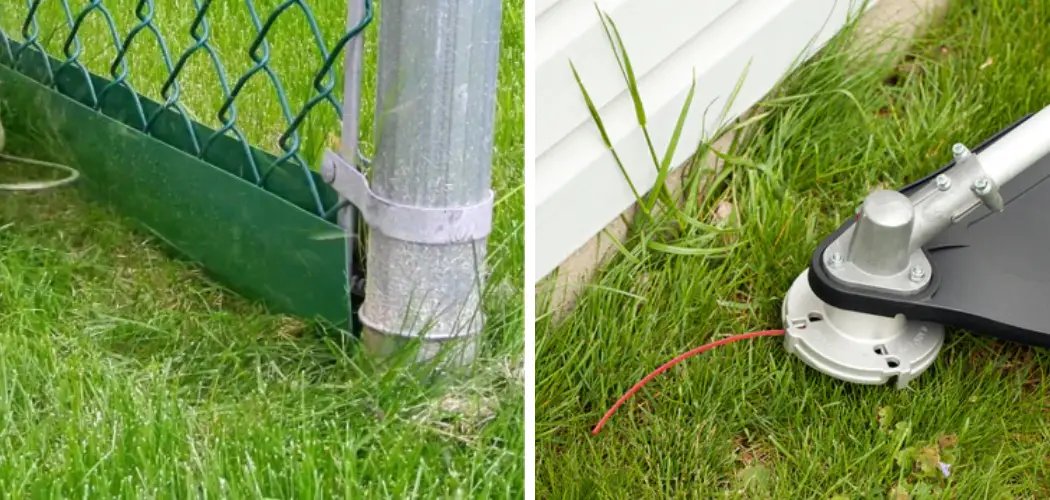Maintaining your yard is essential to keeping up a great-looking exterior of your home, and that includes trimming away all the grass and weeds that grow against or through a vinyl fence. If you have ever pulled at those pesky blades of grass only to watch them snap off just inches from the ground, then you know how difficult it can be to keep your fence line neat.
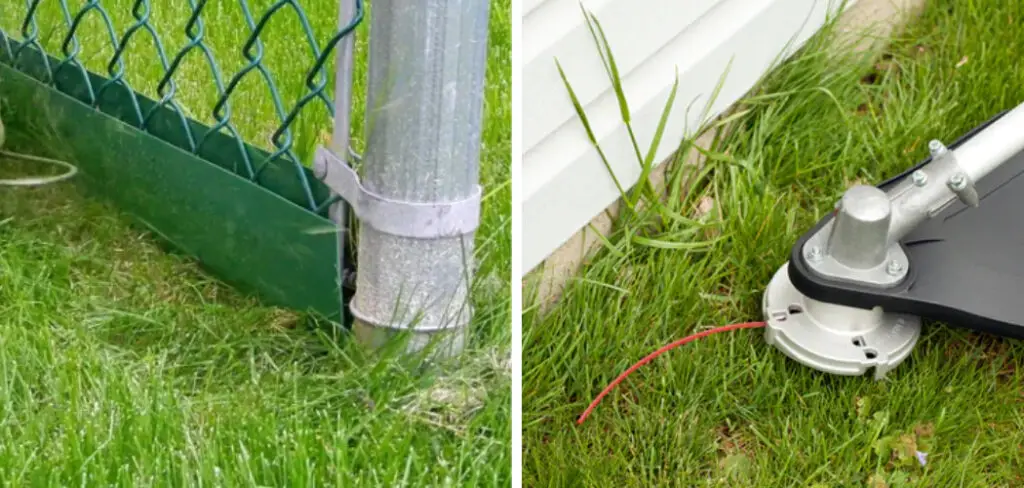
Fortunately, activities such as cutting your grass around a vinyl fence are not quite as hard as they seem—all it takes is having the right tools and understanding how best to do it. We’re here today to discuss tips on how to trim grass around a vinyl fence successfully.
Why Do You Need to Trim Grass Around Vinyl Fence?
You need to trim grass around your vinyl fence for a few reasons.
First and foremost, it keeps the area looking neat and tidy. Untrimmed grass will eventually grow along the fence line, which can block air circulation and create an undesirable appearance. Trimming ensures that everything looks clean and professional.
Second, if you let weeds or other invasive plants grow near your fence, they can slowly work their way through the cracks and crevices. This can lead to further damage down the line if not addressed.
Finally, trimming grass around your vinyl fence will reduce the risk of pests making a home in your yard or garden. Insects like ticks and chiggers are attracted to thick, unkempt grass and can cause significant problems if they get near your vinyl fence.
Tools Needed
To properly trim the grass around a vinyl fence, you need to have the right tools on hand. A trimmer or edger is required for getting into tight spaces. If you’re dealing with thicker, taller grass, then a lawn mower may be necessary.
You also need to have some basic gardening and landscaping tools like shovels, rakes, pruning shears, and more. Gather all the tools you need before starting the job.
10 Steps on How to Trim Grass Around a Vinyl Fence
Step 1: Clean Up
Begin by removing any debris or weeds from the area. Use a garden rake to get rid of any larger items like sticks, stones, and other materials that could be blocking your way. Cleaning up the debris will help you get a better look at the grass around your fence.
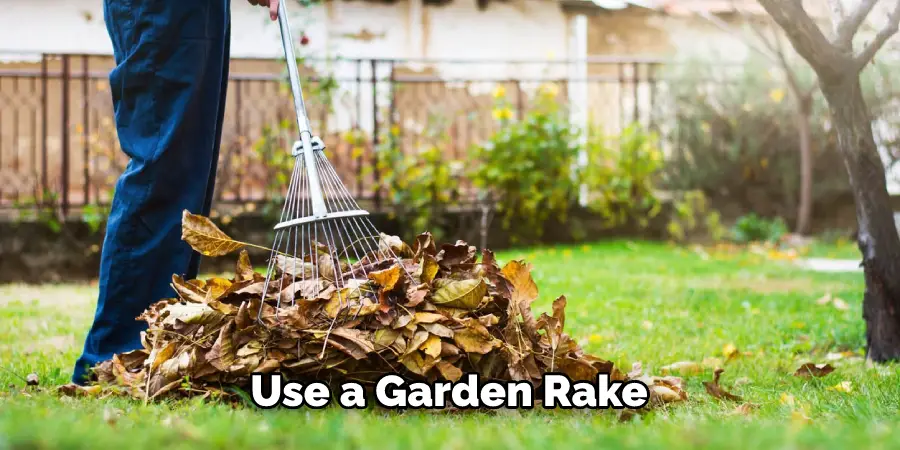
Step 2: Set Up Your Trimmer/Edger
Set up your trimmer/edger with the appropriate blades or attachments for cutting and edging grass. Many trimmers also have an adjustable head that allows you to control how far down to cut the grass.
Step 3: Trim the Grass
Gently start trimming the grass around your fence. Be sure to go slowly and take care when cutting, as going too quickly can cause damage to the vinyl panels or posts. It is best to work in small sections until you’ve gone all the way around the fence.
Step 4: Edge Your Lawn
Once the grass is trimmed, use an edger or trimmer with a blade attachment to create even lines along the edge of your lawn. This will make it look neater and cleaner. Edging is especially important for vinyl fences as it can help prevent grass from growing through the fence.
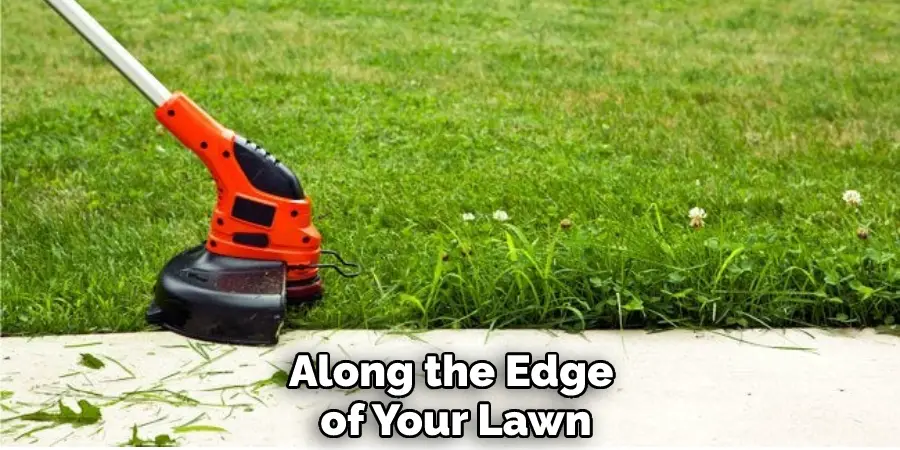
Step 5: Cut Shorter Grass
If you have shorter grass near your fence, use a string trimmer with an adjustable head to cut the remaining blades down. Make sure to go slowly and evenly around the perimeter of your yard. Slow, methodical movements will help ensure that your results look neat and professional.
Step 6: Cut Taller Grass
If you have taller grass near your fence, use a lawn mower to cut it down. Make sure the blade is set to the appropriate height, and go slowly around the yard in a pattern that works for you. Take care when cutting taller grass, as it can be easy to miss spots or cause damage to the fence.
Step 7: Rake Up Cut Grass
After you’re done trimming and edging, use a garden rake to pick up any cut grass that may have accumulated around your fence. This will help prevent grass from clumping around the fence and reduce the risk of weeds growing in that area.
Step 8: Prune Plants and Trees
If you have plants, flowers, or trees near your vinyl fence, it’s a good idea to prune them using gardening shears or pruning saws. This will help keep these healthy plants while also helping to maintain a neat and orderly appearance around your fence.
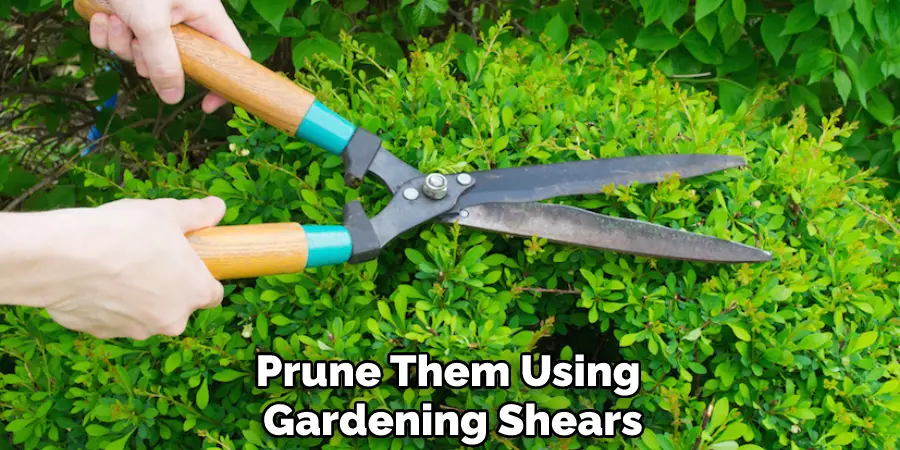
Step 9: Remove Weeds
If you find any weeds or invasive plants growing near your fence, use a garden shovel or hoe to remove them. Be sure to dig up the roots as well so that they don’t return in the future. The weeds can also be pulled by hand, but this can take more time and effort.
Step 10: Clean Up
When you’re done trimming and edging your grass around the vinyl fence, use a leaf blower or broom to clean up any remaining debris. This will help keep your yard looking neat and tidy while also reducing the risk of disease and pests in the area.
Now that you’ve completed these steps, you can sit back and enjoy the finished product. Your vinyl fence will look neat and professional, thanks to your hard work!
With a little effort and know-how, it is possible to keep your grass trimmed around a vinyl fence with minimal effort. Your lawn will look great, and your vinyl fence will last for years to come!
8 Maintenance Tips
- Clean your tools regularly. Make sure any blades you use are sharp and clean when cutting grass around a vinyl fence. Cleaning your tools will help reduce the spread of disease and insects on your lawn.
- Be careful when mowing near a vinyl fence. Mower blades can easily damage or even scratch the surface of the fence, so be sure to keep a safe distance between it and the mower.
- Don’t use trimmers with metal blades on vinyl fences. Metal blades are more likely to scratch or dent the surface of the fence, so use trimmers with plastic or rubber blades for safety and to avoid damaging your fence.
- Prune shrubs and trees regularly near a vinyl fence. Trim any overgrown branches that could rub against the fence, as they may cause scratches.
- Stay away from chemicals when trimming grass around a vinyl fence. Using weed killers, insecticides, or fertilizers near the fence can cause discoloration of the surface and could damage it in the long run.
- Keep an eye out for weeds growing close to a vinyl fence, as they can be difficult to remove. Pull the weeds out by hand or use a weed killer to get rid of them. The weed killer should not come into direct contact with the fence.
- Water your lawn regularly. A healthy and well-watered lawn will help ensure that keep grass grows evenly around a vinyl fence, making trimming easier and more effective. Regular watering also helps discourage weed growth.
- Trim your grass in early spring and late fall when the weather is cooler, and the grass is less prone to damage. This will help ensure your lawn looks neat and well-kept all year round.
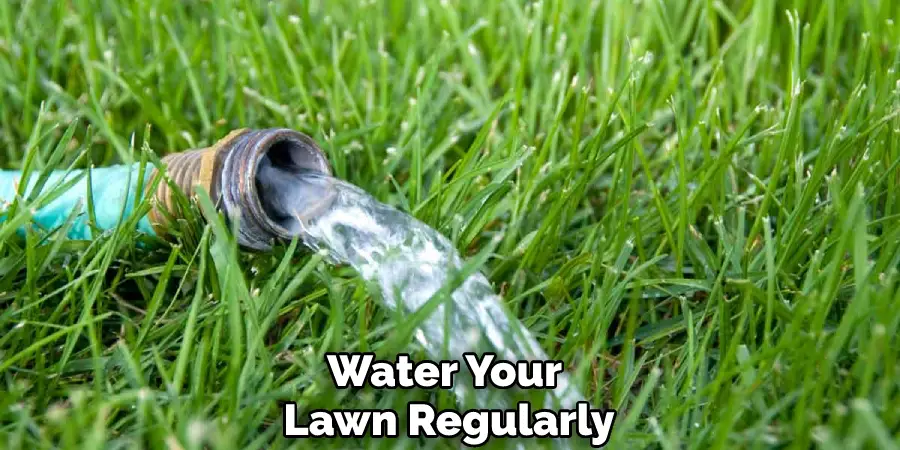
Following these tips can help you maintain a beautiful and healthy lawn around your vinyl fence, making it look its best for years to come.
Frequently Asked Questions
How Often Should You Trim the Grass?
It is best to trim the grass at least once a month, but more often if needed. Remember to use sharp blades and respect the distance between the mower and the fence to avoid damaging it. It doesn’t hurt to trim the grass more often, either.
How far away should you mow from a vinyl fence?
For safety reasons and to avoid damaging the surface of the fence, you should keep a distance of at least four feet between your lawn mower and the vinyl fence when mowing. It can be beneficial to use a grass trimmer with plastic or rubber blades when cutting closer to the fence.
Conclusion
To sum up, trimming grass around vinyl fences can be a time-consuming process, but with the proper tools and techniques, you can accomplish a neat and aesthetically pleasing look. When using a string trimmer, it’s important to hold the tool at an angle so that you don’t damage your fence.
For best results, avoid weed whackers, as these tools often leave streaks on the vinyl. Furthermore, when using electric trimmers, make sure to use a GFCI outlet for safety precautions.
Finally, keep in mind that edging your fence will help create a clean line between your fence and your lawn.
Maintaining your trimming schedule is key to keeping grass away from the fence and getting rid of unsightly overgrown areas. Following these instructions on how to trim grass around a vinyl fence should ensure that both your lawn and vinyl fencing looks polished and pristine!

